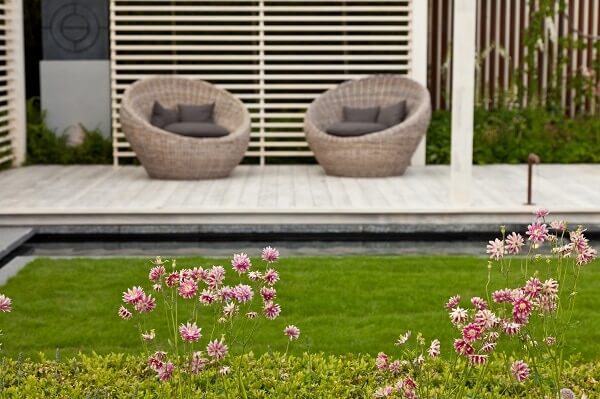Buying a new home is a proud moment for all of us, and moving in can be an exciting time for the family. With a new home, though, come new challenges. All our needs may not be fully met, and we might decide to launch into renovations, whether large and immediate, or small and phased out. Whatever your priority, this article will help you to understand your outdoor space, and offer suggestions on redesigning your yard. The idea, as always, is maximize its effectiveness as you transform it to your taste.
Soil conditions
When it comes to the garden, it is not the plants that need immediate attention, but your soil. Depending on the previous owner, you either have good soil in your yard, or soil that is not so good.
To understand the soil, do a quick PH test with the kits available at your nursery or garden shop. Decide how to improve the soil if required, and then get on to the job of planning which plants you want to add or remove from your garden.
Existing plant varieties, their health and pest issue
- Observe in your yard which plants look great, which look good, and which look not so good.
- Find out the species of the plants using various apps available.
- Before you decide to pull out certain plants, wait at least a year to see how they look different in every season.
- If soil is not good, plants are not going to be healthy so focus on improving soil with organic compost, and fertilizers like chicken and cow manure.
- With the right planting, pest issue should be minimal; if not, take action.

Shade and light
Plants need three main ingredients to thrive: sun exposure, water, and nutritious soil.
- Observe your yard during various times of the day
- Understand the orientation of your garden (i.e., north, north-east etc.)
- Observe the movement of the sun and look at how it casts light in your garden.
- Check if there is any existing irrigation set up.
- Check if there is any drainage or erosion issue during heavy rainfall.
Biodiversity
Along with plants observe the animals, birds and insects that arrive in or use your yard. Everything co-exists in nature; if you eradicate one element, you will end up with issues with another. As long they are not life-threatening, leave the fauna be. You will never know the magic they can weave to protect the plants in your yard, to your benefit in the long run.
Neighborhood plant watch
It is said that what thrives in most other gardens in your neighborhood will thrive in yours. Check out the plants on your street, and incorporate them in your garden. Plants are expensive to buy, so seek out cuttings from your neighborhood gardeners; they’ll be more than happy to share. Check out your local council for free plant giveaways and ask the local nursery with plant selection.
If time is of constraint, engage professionals like a landscape designer or an architect or horticulturist to help you out with choosing the right plants.
Family needs
All family needs are different. List out what you need to add or remove when redesigning your yard. Some hardscapes require a substantial budget and council approval. Do your due diligence before you embark on the renovation work. Understand the level of maintenance and time you can give to the garden in relation to other responsibilities. Choose plants wisely and enjoy your time in your yard.
READ ALSO: Pool friendly plant choices




